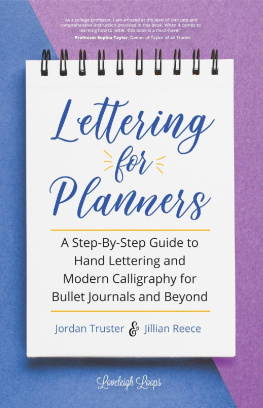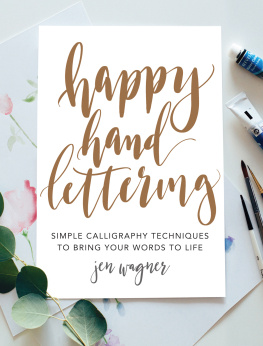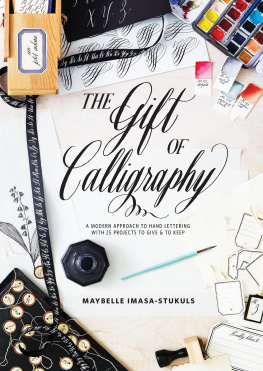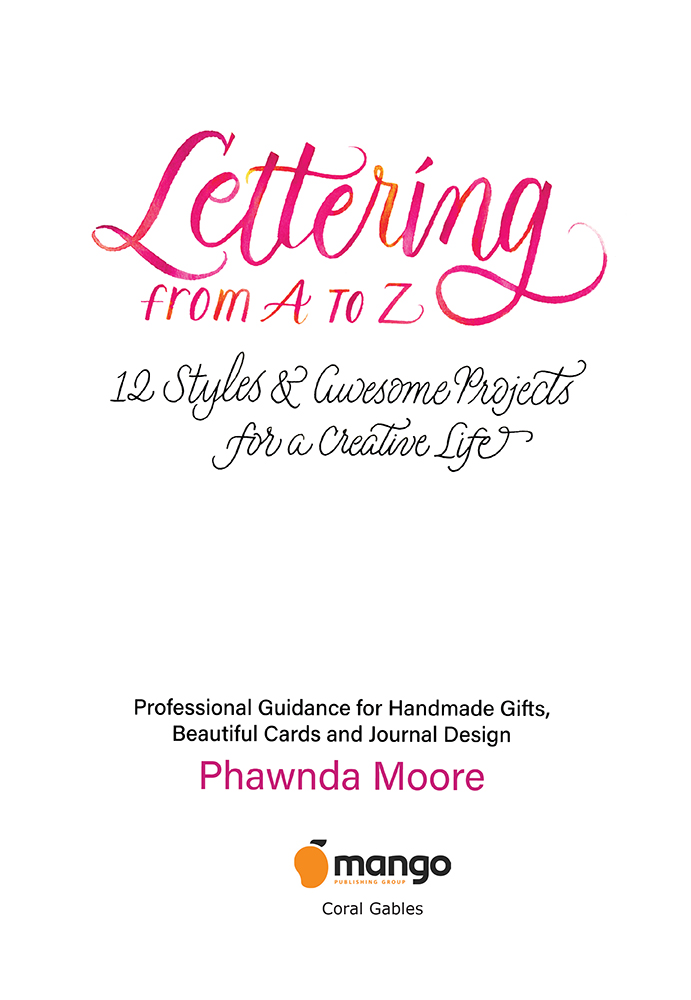
Copyright 2020 by Phawnda Moore.
Published by Mango Publishing Group, a division of Mango Media Inc.
Cover Design: Elina Diaz
Cover Photo/illustration: Phawnda Moore
Layout & Design: Elina Diaz
Mango is an active supporter of authors rights to free speech and artistic expression in their books. The purpose of copyright is to encourage authors to produce exceptional works that enrich our culture and our open society.
Uploading or distributing photos, scans or any content from this book without prior permission is theft of the authors intellectual property. Please honor the authors work as you would your own. Thank you in advance for respecting our authors rights.
For permission requests, please contact the publisher at:
Mango Publishing Group
2850 S Douglas Road, 2nd Floor
Coral Gables, FL 33134 USA
For special orders, quantity sales, course adoptions and corporate sales, please email the publisher at or +1.800.509.4887.
Lettering from A to Z: 12 Styles & Awesome Projects for a Creative Life
Library of Congress Cataloging-in-Publication number: Has been requested
ISBN: (print) 978-1-64250-382-1, (ebook) 978-1-64250-383-8
BISAC category code: ART003000, ART / Techniques / Calligraphy
Printed in the United States of America
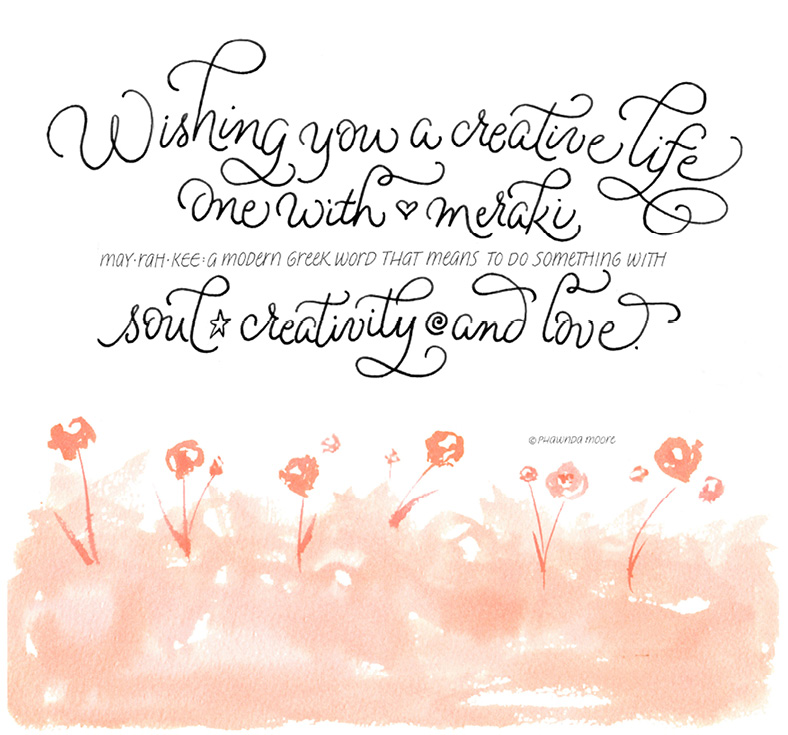
Table of Contents
Greetings
It is said that life is more meaningfuland that we live longerif we find something were keenly interested in and connect to it. I hope thats true for all of us!
As a calligrapher, writer, editor, and instructor, my life paths lead to connections with kindred spirits. Im grateful for the many experiences of working together as weve created art in words and images. Writing Lettering from A to Z: 12 Styles & Awesome Projects for a Creative Life has allowed me to revisit those memories and include some of the m for you.
My instructors taught me patience because good lettering takes time. The most important thing is to slow down, get comfortable, and just begin. In quiet solitude, focus, wonder, experiment, seek your own path, and enjoy the process! Theres a kind of magic in this: we grow, learn new things, and discover w ho we are.
I have observed these benefits for many years as Ive had the pleasure to teach mostly retired professionals. Their questions and ideas are reflected in my workshops and in this book. Once a commercial graphic designer for printed projects, I now have the privilege to share some of that experience and work on a personal level with the nicest people Ive ever met.
Perhaps you have a stack of blank cards or have saved a loved ones handwritingand now you want to send keepsakes of your own. This book is written for you, beginning to intermediate creatives, who seek traditional influence and practical instruction to make everyday things beautiful and memorable. Hand lettering can heal, celebrate, send love, recognize, mourn, and let be. In the big picture, these are all opportunities that matter in the gif t of life.
I hope Lettering from A to Z: 12 Styles & Awesome Projects for a Creative Life enlightens, educates, and encourages you. Think of it as a journey; start and stop with me along the way Le ts begin!

Getting Started in a Creative Life
In the Beginning
You and I (and everyone) have a beginning, andheres the best part98 percent of us were born creative.
This topic was researched in 1968 by Dr. George Land, who led a five-year observation of 1,600 children. He tested the same group of children at ages five, ten, and fifteenand as adults. At age five, a mighty 98 percent were creative.
But at age ten, it dropped to 30 percent; at age fifteen, down to 12 percent; and as adults, just 2 percent. Some resources give a slightly higher percentage for adults creativity than Dr. Lands study, with a high of percent.
Creative adults, compared to the general population, are known to have unique traits. One of these is curiosity. If you find that youre more curious than others, you may wonder why. In school, you might have been the one to ask why while your classmates silently looked on. I remember asking a friend in kindergarten why her mother pinned a spotless lace handkerchief, folded in quarters, on her jacket every day!
We can learn much from children. Ive had the opportunity to teach both gifted students (grades four and five) and incarcerated young adults (age sixteen and older) in a collaborative lettering design for a holiday card. The goal was for each student to make a single stroke of a letter with one tool and color, and then it was the next stude nts turn.
Although both groups had the same assignment, the results were wildly different. The incarcerated students were excited to do art, but lacked the focus and trust to collaborate. I felt very sad when I collected their projects. The art indicated their natural creativity was quite low, most likely because of their diffic ult lives.
In contrast, the younger students instinctive participation far exceeded my expe ctations.
Heres what the fourth and fifth gra ders made:

My experience supports Dr. Lands theory that many adults lose their natural creativity because theyve learned noncreative behavior. Sometimes folks sigh, Im just not creative. But most likely, at one time, they were. And chances are, its st ill there.
My well-meaning parents acknowledged my early interest in art but advised me to seek a career as a nurse or teacher. Thankfully, I had a grandma who encouraged my c reativity.
When I was fourteen, I spent the weekend with her, and we took a trip to the local supermarket. Smiling at me, she pointed to a poster announcing an art contest. Soon, I was sketching the produce aisle in colored pencil, delighting in the shapes and colors of lettuce, eggplant, carrots, and tomatoes.
We were so excited to place my drawing in the heap of entries! Lo and behold, I won the contest and was awarded a huge prize: a transistor radio in turquoise; its still my favorite color. Later in life, she often asked me to letter her favorite quotes, words to songs, and recipes. Today, Im so grateful for my grandmas love an d support.
You probably have early memories of making art, toodid you enjoy the feeling of holding a new crayon or pencil? Were you fascinated by finger painting and watching the colors change? Take a moment to remember those care free days.
For most, the next seasons in teen and adult life didnt allow much time or encouragement for creating. Often, real life intervenes with time to examine your heart, and question stereotypes or false expectations. This was explained well by a friend when she discovered that her chosen career no longer fit who she was. She searched for a new path, saying, I had to reinven t myself.
I can relate to this too; I explored creativity more deeply after I was divorced. By being open to the possibilities and reaching out, I grew in creative interests and opportunities. Spending time alone and redefining our purpose are always good investments. They can lead to a crea tive life.
It helps to have a mentor in the beginningor to be one. If youre a parent, grandparent, or have young neighbors, listen, observe, and collaborate as you build your creative lifeand theirs. Youll find guidance and ideas throughout this book.
Next page




